adventure
The Cat Lady
Well, I was not entirely ready for this. The Cat Lady, released last year by Screen 7 and created almost entirely by Remigiusz Michalski, was absolutely no where on my radar until I recently saw a preview of it in action. I suppose this isn't overly surprising. Michalski's and his studio, Harvester Games, have only developed two titles. The first, released in 2009, is called Downfall and is apparently both highly acclaimed and fairly successful. The second is this game, The Cat Lady. Both are created in Adventure Game Studio and are horror adventures, further limiting the client base (unless you have the media strength of The Walking Dead).
Yet, this ended up being one of the most interesting and complete titles I've played in ages. And somehow, that's even more satisfying when it's a complete surprise. It feels like this game has been stirring and simmering over the course of many years, and that probably isn't very far from the truth. This is an unbelievably mature experience, most likely the most mature game I've ever played. Many of the themes are very dark and complex and real, and this is one of the few instances I can imagine where an age/user discretion is actually warranted. And that can also be a bit of a warning for the rest of this article.
Prince of Persia
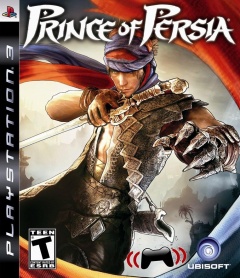 The success of Prince of Persia: The Sands of Time completely rejuvenated a left for dead franchise. From a series that was known for its challenging, timed gameplay, rose a 3D incarnation that was nearly beloved by both the gaming press and gamers themselves. Setting the gears in motion for sequels, spinoffs, and a movie, The Sands of Time was both a trendsetter for many future titles and an acknowledgement to its roots.
The success of Prince of Persia: The Sands of Time completely rejuvenated a left for dead franchise. From a series that was known for its challenging, timed gameplay, rose a 3D incarnation that was nearly beloved by both the gaming press and gamers themselves. Setting the gears in motion for sequels, spinoffs, and a movie, The Sands of Time was both a trendsetter for many future titles and an acknowledgement to its roots.
A few years after its immediate trilogy sputtered off, Ubisoft tried to remake the prince once again with Prince of Persia, no subtitle. Much like the NES Ninja Gaiden and the Xbox Ninja Gaiden, Prince of Persia was annoyingly named the exact same as the original game twenty years its predecessor. But if fans were expecting an even closer imitation of the original, they would be quite surprised with the bigger changes made by Ubisoft.
Prince of Persia (2008, not 1989) received mixed reviews with attention to the excellent art and animation, but some disdain towards the game’s reported simple difficulty. What attracted me to reviewing the game’s first hour was definitely the art style. Borrowing the watercolor look from Okami was definitely a brave move by a generally conservative Ubisoft, and I am hoping some of that creativity might have run over to the parkour and fighting elements of the game. Let’s take a look.
Stacking
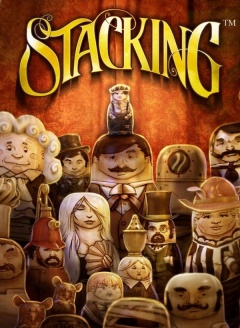 Well, this has been a long time coming.
Well, this has been a long time coming.
Stacking came out for Xbox Live and PlayStation Network in early 2011, and it immediately captured my interest. With characters based on the Russian stacking matryoshka dolls and the narrative devices of silent films of yesteryears, it was definitely a unique offering, though looking over Double Fine Productions’s history it’s clear that that’s their thing. Quirky mish-mashes: RTS and musical influences for Brütal Legend, Halloween outfits and RPG elements for Costume Quest, and summer camp and psychic abilities for Psychonauts. However, I just never got around to getting it due to my severe distaste for buying Microsoft Points, since the conversion rate of USD dollars to Space Bucks never seems to be in the buyer’s favor.
Flash-forward to July 2012, and the Steam Summer Sale has now concluded. I was able to snag this bite-sized adventure for a cool couple of bucks, as well as a slew of other titles. But for now, let’s play with dolls for an hour and see how things turn out.
Cave Story+
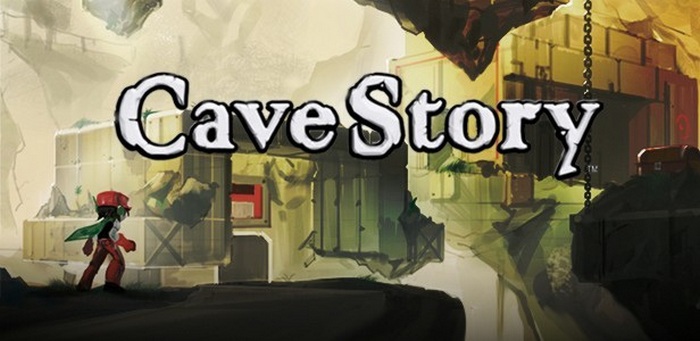 In the last few years, I’ve had trouble focusing on beating games. This isn’t necessarily a bad thing, but I’ve built up such a huge backlog from Steam sales and Humble Bundles, that I was getting closer to owning more games that I hadn’t conquered that had. This was personally my big reason for green-lighting the new Indie Impression feature: it would give me an easy way to at least try out lots of games without necessarily committing even an entire hour.
In the last few years, I’ve had trouble focusing on beating games. This isn’t necessarily a bad thing, but I’ve built up such a huge backlog from Steam sales and Humble Bundles, that I was getting closer to owning more games that I hadn’t conquered that had. This was personally my big reason for green-lighting the new Indie Impression feature: it would give me an easy way to at least try out lots of games without necessarily committing even an entire hour.
Having recently featuring Cave Story+, I quickly plowed through it after finishing up my impressions. It is one of those games you hear about for years as being great, and it keeps getting re-released with newer graphics on more platforms, once Cave Story+ hit Steam the time was right.
My initial impressions were positive, viewing the game as a pretty solid Metroidvania with tight controls, let’s see if I found the rest of the game as appealing.
Fluidity
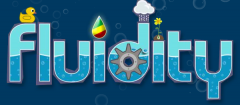 Thanks to the indie uprising, we have a heightened visibility for games that might have gone unnoticed just five years ago. A garage developer's labor of love can now share front page headlines with the AAA behemoths of the industry. Many fine media outlets even make a special effort to cover these smaller productions. Indie games have become the punk rockers of the industry, offering a lean alternative to overproduced AAA formulas, often with rebellious verve and spunk that resonates with us ninety-nine percenters (and at a price we ninety-nine percenters can afford).
Thanks to the indie uprising, we have a heightened visibility for games that might have gone unnoticed just five years ago. A garage developer's labor of love can now share front page headlines with the AAA behemoths of the industry. Many fine media outlets even make a special effort to cover these smaller productions. Indie games have become the punk rockers of the industry, offering a lean alternative to overproduced AAA formulas, often with rebellious verve and spunk that resonates with us ninety-nine percenters (and at a price we ninety-nine percenters can afford).
But even in this new era, where the little guys yield as many pageviews as their big budget competition, an indie game needs to have some innovative hook or bombastic message in order to rise to the top. I can think of no other reason why Fluidity, a brilliant puzzle platformer with Metroidvania elements, has gone largely unnoticed. (Except that the game is marooned on Wii's invisible WiiWare digital distribution service, that is.)
It makes sense, though, doesn't it? So many indie darlings that went big had some kind of divergent aura about them. Limbo and Braid made their names with artsy themes and visuals that you just don't see in big money productions. The cheery brutality of Super Meat Boy, Magicka, and Castle Crashers upgraded them from mere mechanical joys to acclaimed game experiences. Fluidity, on the other hand, lifts its style and mood from airline safety manuals, of all things.
Cave Story+
 Cave Story was originally released all the way back in 2004, with development starting five years before that by a single guy, Daisuke Amaya. The side-scrolling adventure has gained momentum over the years, and is now recognized as being one of the original independent games that has spawned what is nearly a total upheavel of the video game industry. With the Humble Indie Bundle, Steam, Desura, and a slew of very talented developers, indie games are making huge waves, and sales.
Cave Story was originally released all the way back in 2004, with development starting five years before that by a single guy, Daisuke Amaya. The side-scrolling adventure has gained momentum over the years, and is now recognized as being one of the original independent games that has spawned what is nearly a total upheavel of the video game industry. With the Humble Indie Bundle, Steam, Desura, and a slew of very talented developers, indie games are making huge waves, and sales.
While Cave Story is available on nearly every platform, it finally hit Steam a few months ago with the release of the fourth Humble Bundle. To note the higher resolution graphics and a new soundtrack, the game was re-titled Cave Story+, but there is an option to revert to the original look and sound.
We're very happy to present Cave Story+ as our third Indie Impression, following Super Meat Boy and Dungeons of Dredmor. Blackwell Legacy will be following in a few days.
Fluidity [Video]
 I don't know why I've bothered registering my games with Club
Nintendo these past five years. So many surveys and registration codes,
and what have I received in return? A couple calendars, an LCD relic,
and a set of collectors' pins. It's downright sad next to the free
eReader that Sony sent me.
I don't know why I've bothered registering my games with Club
Nintendo these past five years. So many surveys and registration codes,
and what have I received in return? A couple calendars, an LCD relic,
and a set of collectors' pins. It's downright sad next to the free
eReader that Sony sent me.
But times have changed, and this is the new, modern Nintendo! The bold new Nintendo of 2012 not only releases limited-availability demos and supports paid DLC, it actually puts up some worthwhile prizes for Club Nintendo members. Specifically, Club Nintendo now offers a small selection of downloadable games in exchange for the coins that you earn by registering Nintendo products. First party games only, but hey, baby steps.
Fluidity, a WiiWare title of some renown (called Hydroventure in Europe), was one of the games available in December for a fair 150 coins (it's no longer there, but you can only get it on the Wii Shop Channel for $12). The game received positive press and has whiffs of Metroidvania and fluid dynamics puzzles, so that sounds like a winner to me. I've played an hour: am I happy with the coins I spent, or should I have gone for the Mario Folder and Bookmark Set instead? I'd be the coolest kid in homeroom with those folders...
The Legend of Zelda: Skyward Sword
 The Legend of Zelda: Twilight Princess was my primary reason for buying a Wii at launch. It left me feeling disappointed and greatly annoyed. Five years later, beating The Legend of Zelda: Skyward Sword on my second Wii (after selling my first just days after beating Twilight Princess) leaves me with nearly the opposite effect: I loved it and am slightly giddy to write a review about it before the end of the year.
The Legend of Zelda: Twilight Princess was my primary reason for buying a Wii at launch. It left me feeling disappointed and greatly annoyed. Five years later, beating The Legend of Zelda: Skyward Sword on my second Wii (after selling my first just days after beating Twilight Princess) leaves me with nearly the opposite effect: I loved it and am slightly giddy to write a review about it before the end of the year.
I was definitely not feeling the game a few hours in. Twilight Princess’ first hour is awful and Skyward Sword’s is arguably worse, and the ramp up feels tedious. My list of annoyances was longer than any kind of enjoyment I was getting out of the game, but once the game does ramp up, it does it incredibly successfully.
So as the Wii’s last hurrah, Skyward Sword leaves a great impression, here’s my review of the latest Legend of Zelda game, released in November. This is our second full review of the game, following Nate’s from last week. I re-read his review in preparation for my own, and have to say I agree on basically every point. So hopefully this review won’t be longer than it needs to be, but if you have some time, do read his write-up.
The Legend of Zelda: Skyward Sword
 The lasting impression from my recent introduction to the original
Legend of Zelda was its unstructured progression. With only a ghost of a
narrative driving the action and few barriers to limit wanderlust, the
course of my trip through Hyrule was almost entirely up to me. Having played Ocarina of
Time before any other Zelda game, I was surprised to see just how
hands-off the original was.
The lasting impression from my recent introduction to the original
Legend of Zelda was its unstructured progression. With only a ghost of a
narrative driving the action and few barriers to limit wanderlust, the
course of my trip through Hyrule was almost entirely up to me. Having played Ocarina of
Time before any other Zelda game, I was surprised to see just how
hands-off the original was.
In contrast, last month's Skyward Sword may be the most linear Zelda experience yet. The newest quest sees Link flying from one compact landmass to the next with hardly any room for side trips. The vast sky of islands is sparser than Wind Waker's nearly endless ocean, and even the surface world below is but three masses of land separated by impenetrable mountain ranges and deserts and forests. This is a Zelda where the path to the next waypoint is often the only path.
Every game in the series since the eighties original has trended towards structure and direction as story progression and ability acquisition gained a greater share of the Zelda spirit. Aesthetic similarities and recurring tropes aside, The Legend of Zelda and Skyward Sword could be mistaken for two wholly separate franchises. For better or worse, Skyward Sword feels like the end state of a slow evolution that Nintendo has been cooking for twenty-five years.
LEGO Harry Potter: Years 5-7
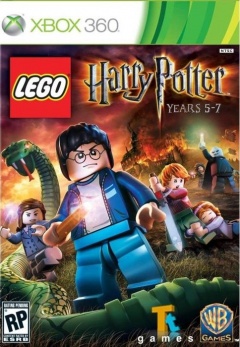 I love the LEGO videogames. I’ve said this before, and I’ll probably keep on saying it, especially if the folks over at Traveller’s Tales use their magical powers to read my mind and make LEGO Lord of the Rings or LEGO Men in Black next. My favorite of the bunch so far has been LEGO Harry Potter, Years 1-4, which managed to follow both the films and books while also giving fans a ton of love with their attention to details. It seemed perfect for LEGO-izing, with magic and a wide cast of characters, but I was disappointed that it only covered half of Harry’s legacy; the developers padded out the experience by giving players Hogwarts, a huge hub to explore that revealed more and more in a Metroidvania style after certain spells and classmates were acquired.
I love the LEGO videogames. I’ve said this before, and I’ll probably keep on saying it, especially if the folks over at Traveller’s Tales use their magical powers to read my mind and make LEGO Lord of the Rings or LEGO Men in Black next. My favorite of the bunch so far has been LEGO Harry Potter, Years 1-4, which managed to follow both the films and books while also giving fans a ton of love with their attention to details. It seemed perfect for LEGO-izing, with magic and a wide cast of characters, but I was disappointed that it only covered half of Harry’s legacy; the developers padded out the experience by giving players Hogwarts, a huge hub to explore that revealed more and more in a Metroidvania style after certain spells and classmates were acquired.
J.K. Rowling finished up all the books way back in 2007, and the money-making films now dead and done until some fool tries to remake them all in like ten years. I’ve never played any of the movie tie-in videogames—though I did have fun flying on brooms and catching Golden Snitches with Harry Potter: Quidditch World Cup for the PlayStation 2—but from what I can gather, many of them are not great. Especially the Kinect ones, which tries to turn Harry into a new recruit for Gears of War. LEGO Harry Potter, Years 5-7 could very well be the last greatest game for the franchise, simply because there’s probably not much else coming out for it afterwards.
My favorite thing about the LEGO videogames are that they are perfect for playing co-op. There’s a challenge, sure, but exploring the levels and piecing everything together is more fun with a partner. Like my wife, Tara Abbamondi. Comments from her are in red!
Okay, let’s see if the first hour of LEGO Harry Potter, Years 5-7 is just as magical as the previous game’s.

